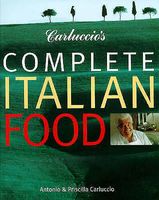Advertisement
Oliva
Olive
Appears in
By Antonio Carluccio and Priscilla Carluccio
Published 1997
If you were to eat an olive picked straight from the tree you would discover that it is extremely bitter; whether ripe (black) or unripe (green), it is inedible. It is the salt-curing process that makes olives palatable.
Olives grown for consumption are generally different varieties from those grown for oil production, with the exception of Taggiasca which is grown in Liguria for both. Edible olives, called ‘da tavola’, are mostly grown in the south and include varieties such as the fairly large green Ascolana in the Marche, the Pugliese Cerignola, Maiatica and Molellara, and in Sicily, the Bella di Spagna, Santa Agostino and Santa Caterina from Spain, all of which are picked when green and unripe but which turn from deep violet to black when ripe.



